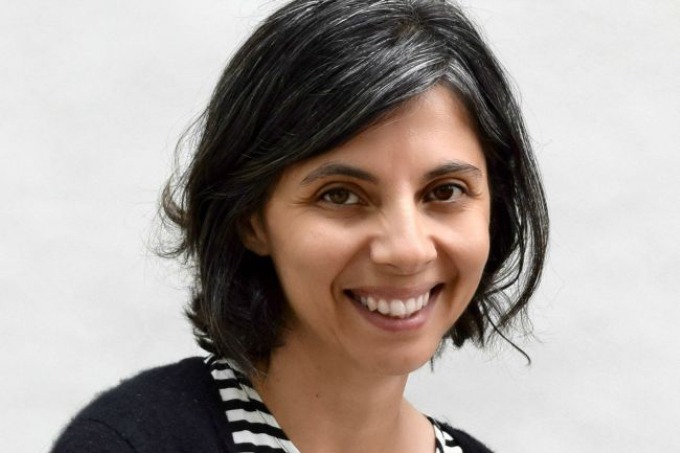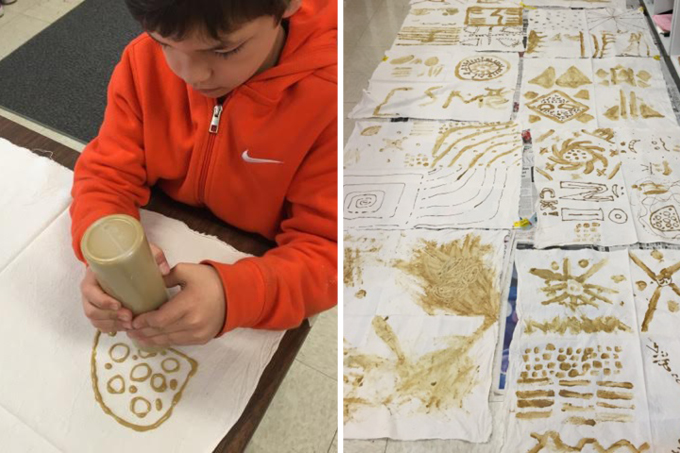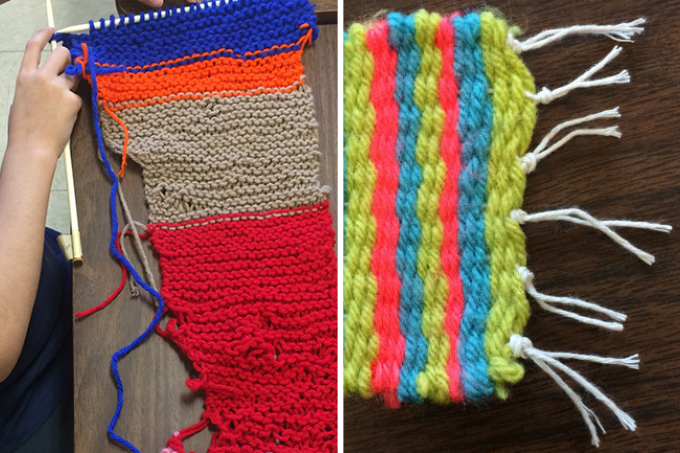September 07, 2016
Reflecting on the Arts Integration Learning Lab: An Interview with Artist Amanda Wood

We're thrilled to bring the Arts Integration Learning Lab to Vancouver Island this November. If you're an artist living and working in BC's Vancouver Island and Coast region, be sure to check out this subsidized learning opportunity—and apply by September 30, 2016!
To give you an idea of what participants can look forward to, we wanted to check in some artists who have already taken part in one of these events, to find out what they learned and how they are applying their learning experience to their art practice. Artist Amanda Wood participated in the Arts Integration Learning Lab that took place in Vancouver earlier this year.
Hi, Amanda! Can you tell us about your art practice?
I am a textile artist. I have a process-based approach to my work. I start with photography, which leads to explorations in collage and drawing—and from there I proceed to dyeing, stitching or weaving. I like this idea of showing the strength of cloth. People don't think of cloth often, but it's always around you, it's on you. It's the first thing you receive when you're born and it's the last thing you have when you die.
Traditionally, weaving is 2D, like tapestries or rugs. I use a double-weave process which allows me to weave two layers of cloth at the same time. I've been doing three-dimensional weavings for a number of years. The scale of the work depends on what I'm doing. I'm starting to go larger and I'm moving towards larger three-dimensional woven installations.
Before the Arts Integration Learning Lab, what did you feel you lacked in your art practice that might enable your practice to work well in a school setting?
Before the Learning Lab, I had done a lot of volunteering in schools. I had an understanding of school culture and I understood how to approach different grade levels to a certain point, but what I didn't really understand was how to narrow down my art practice into something that could work in a classroom. So the projects that I tended to do were completely different from my art practice. What really helped me is understanding that when I am an artist in a classroom, the learning experience could all be processed-based. That's a really difficult thing to communicate sometimes with teachers because a lot of their work has to be based on outcomes. Whereas parts of what I do is about seeing and playing with materials.

How was your experience with the Arts Integration Learning Lab?
One thing that really stood out for me was getting to meet other artists in other disciplines. I didn't have any experience with dance or theatre... or people that made instruments from bicycle parts! Seeing other people's art practices and seeing the ways there can be overlaps was really expanding.
How did the Arts Integration Learning Lab affect your practice?
The work that we did on the new curriculum really helped me expand my perceptions of what art making looks like in a classroom. How do I connect my current practice to the curriculum? How do I find the parallels and cross-curricular connections? Some of the activities that we did as a group were really hard, but it was expanding. Every day, after each workshop, I could feel the synapses connecting in new ways, going this way and that way.

What have you been up to since then?
This Spring, just after the Learning Lab, I did an indigo workshop with a Grade 1-3 and a Grade 7 class. It really helped me help tailor to the different age groups and think about what their curricular needs were. Even though the teachers were saying, "I've got the curriculum, don't worry about it", I still kept it in my mind that we can touch on science, and we can touch on math and history. It was easier to collaborate with teachers. With the Grade 1-3 class, it was incredible. There was a parent that spent some time in an area of Indonesia where no one spoke English. She harvested indigo to dye yarn for weaving, so she came in to talk about her experience while we were doing the workshop.
I'm working on a couple of things now. I just launched my website. I'm also starting to teach in the Fall at the Silk Weaving Studio on Granville Island. I also got into the Artists in the Classroom Directory with ArtStarts and the Vancouver School Board's Artist in Residence program.
The Learning Lab gave me information and so many resources that I didn't know about before. It gave me confidence in how to develop and package my ideas and then communicate them to teachers.

Now it's your turn!
Are you a professional artist interested in working with young people and educators in schools? Or do you already have some experience and want to enhance your skills?
The Arts Integration Learning Lab is a professional development experience for artists of all disciplines, designed to build their capacity and position them to work alongside educators in schools.
The cost for artists selected to participate in the Arts Integration Learning Lab will be subsidized and covers tuition, program materials and lunch. A subsidy for accommodation is also available. This opportunity is made possible through funding support from BC Arts Council and the Government of British Columbia's Creative Futures program.
This event offers a series of five practical, experiential learning workshops taking place in Nanaimo, from November 14 to 18, 2016. Professional artists living throughout BC's Vancouver Island and Coast region are invited to apply. This region includes all of Vancouver Island, the Gulf Islands, and the Sunshine Coast to the Central Coast (from Gibsons north to Bella Coola).
Get a taste for what to expect: read about our most recent Arts Integration Learning Lab events on our blog.
Learn more and apply online by September 30, 2016 at artstarts.com/infusion
Social Sharing
Past Stories
Search by category
Accessibility | AIC Projects | Arts Integration in Action | ArtStarts Artists | ArtStarts Team | Community Events and Engagement | Exhibitions | Grants | Guest Blog | Infusion Pro-D | Knowledge Philanthropist | Meet a Community Art Star | Showcase | Supporters | The Next 20

